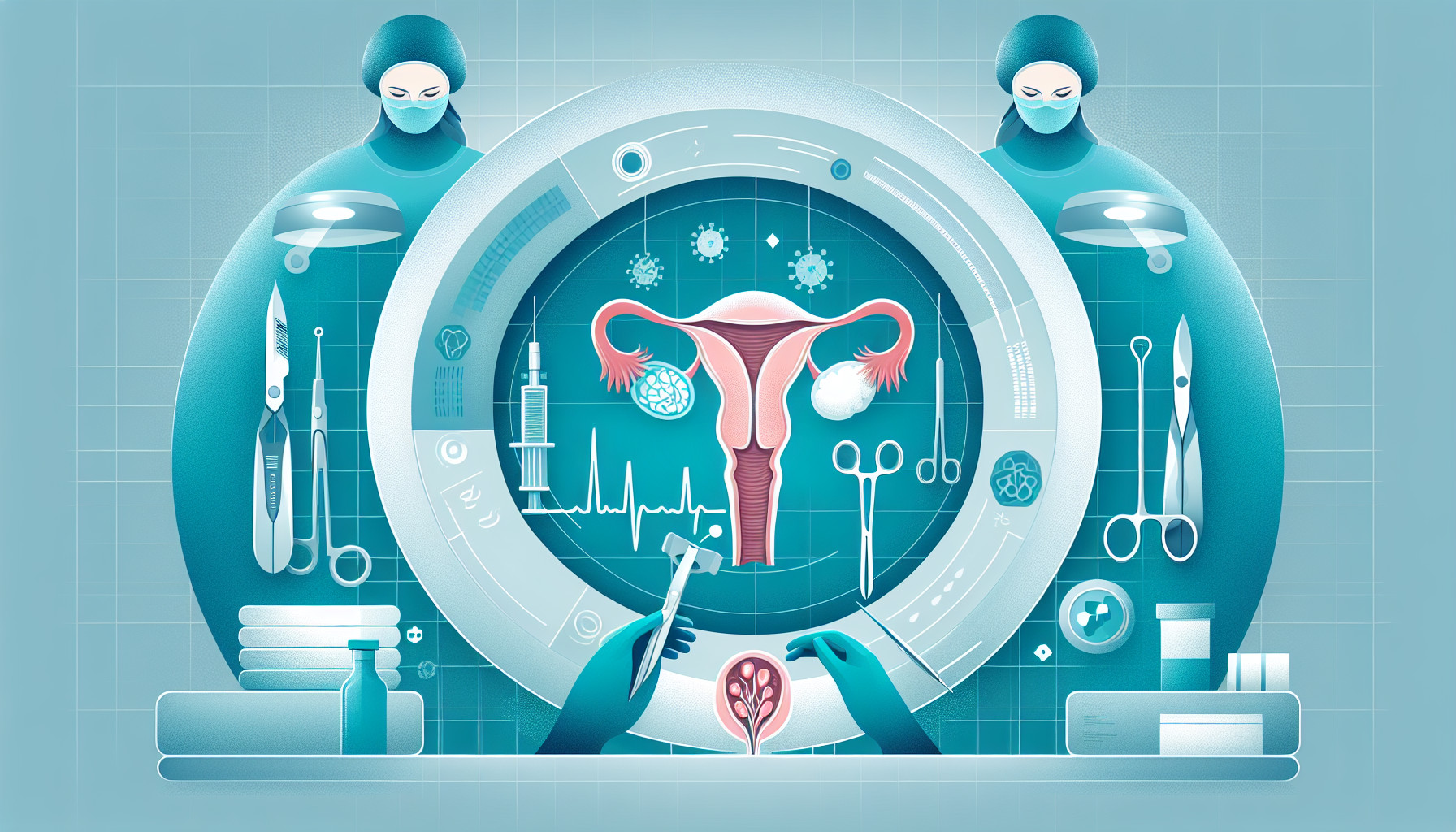Our Summary
Adnexal torsion is a common emergency situation in gynecology, which if not diagnosed quickly, can cause problems with ovarian function. One way to diagnose it is by looking for a particular sign on an ultrasound, known as the ‘whirlpool sign’. However, this is often technically challenging for those performing the ultrasound.
Researchers in this study developed a step-by-step method to make it easier to see this sign on an ultrasound. They focused on the fact that the torsion, or twisting, happens in the space between the uterus and the pelvic wall. The method involves finding the source of the twisting by taking a cross-section image of the uterus and then following the twisted ligaments to the ovarian cyst.
The researchers tested this method on two women who came to their hospital with lower abdominal pain. Both women had ovarian cysts and showed the whirlpool sign on their ultrasounds. Using laparoscopic surgery (a minimally invasive surgery using a small camera), the doctors confirmed the presence of the cysts and successfully removed them.
The researchers concluded that their systematic method made it easier for less experienced practitioners to identify the whirlpool sign on an ultrasound. This could potentially lead to quicker diagnosis and treatment of adnexal torsion in future cases.
FAQs
- What is the whirlpool sign and how is it used in diagnosing ovarian cyst torsion?
- How can less experienced practitioners detect the whirlpool sign in ovarian cyst torsion?
- What is the importance of prompt diagnosis of adnexal torsion in gynecological emergencies?
Doctor’s Tip
A helpful tip a doctor might tell a patient about ovarian cyst removal is to follow post-operative care instructions carefully, including taking prescribed pain medication, avoiding heavy lifting or strenuous activity, and attending follow-up appointments to monitor recovery and ensure there are no complications. It is important to rest and allow your body to heal properly after surgery.
Suitable For
Patients who are typically recommended ovarian cyst removal include those who present with symptoms such as lower abdominal pain, especially if the pain is severe and sudden in onset. In cases where the ultrasound shows a large ovarian cyst or a cyst located in a concerning location (such as the Douglas pouch), surgery may be recommended to prevent complications such as adnexal torsion. Additionally, patients who have recurrent cysts or cysts that are causing other symptoms such as bloating, urinary urgency, or irregular menstrual cycles may also be recommended for ovarian cyst removal.
Timeline
Before ovarian cyst removal:
- Patient experiences lower abdominal pain.
- Patient undergoes transvaginal ultrasonography to identify the ovarian cyst.
- The whirlpool sign, indicating adnexal torsion, is detected.
- Laparoscopic guidance confirms the presence of the ovarian cyst and the need for surgery.
After ovarian cyst removal:
- Laparoscopic surgery is performed to remove the ovarian cyst.
- The patient may experience some discomfort and pain post-surgery.
- Follow-up appointments are scheduled to monitor the patient’s recovery and ensure no complications arise.
- The patient’s symptoms of lower abdominal pain should improve after the cyst removal.
- The patient may experience relief from any pressure or discomfort caused by the cyst.
What to Ask Your Doctor
Some questions a patient should ask their doctor about ovarian cyst removal include:
- What are the risks and potential complications associated with ovarian cyst removal surgery?
- What type of surgical procedure will be used to remove the ovarian cyst?
- How long is the recovery period after ovarian cyst removal surgery?
- Will I need to take any medications or follow a special diet after the surgery?
- What are the chances of the ovarian cyst returning after removal?
- Will removing the ovarian cyst affect my fertility or hormone levels?
- Are there any alternative treatment options available for ovarian cysts?
- How often should I follow up with my doctor after the surgery?
- What symptoms should I watch out for that may indicate a complication after the surgery?
- Can you explain the specific steps of the surgery and what to expect during the procedure?
Reference
Authors: Higashide R, Saito K, Hashido N, Ishikawa T, Miyasaka N. Journal: J Rural Med. 2023 Jul;18(3):189-193. doi: 10.2185/jrm.2023-002. Epub 2023 Jul 7. PMID: 37448699
